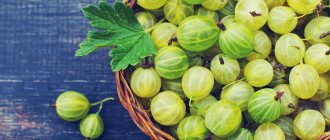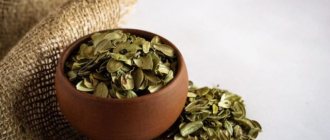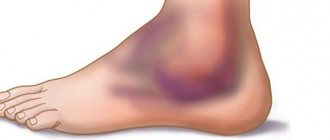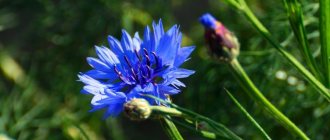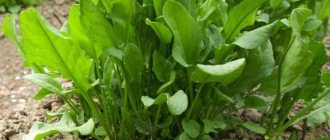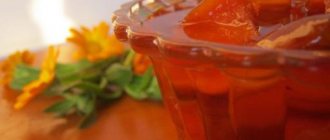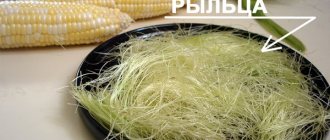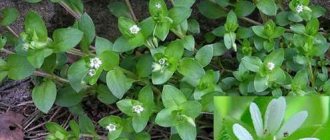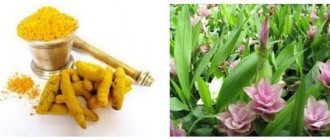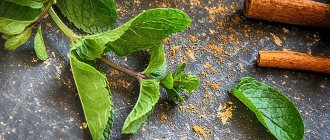Useful Features
The benefits of rhododendron leaves are explained by the inclusion of various compounds and substances important for life.
Saponins, organic acids, and arbutin were identified. Glycosides, tannins, and ascorbic acid are present. There are flavonoids, resins, and a small amount of essential oil. Medicinal properties:
- sweatshops;
- bactericidal;
- diuretics;
- painkillers;
- anti-inflammatory;
- sedatives.
Rhododendron preparations help with the development of cardiovascular failure and reduce swelling. Used for intestinal diseases.
They help treat gum inflammation, stomatitis, and cervical erosion. They are practiced for colds, the development of inflammatory processes in the throat, rheumatism, and polyarthritis.
It heals skin lesions well - boils, abscesses. Prescribed for radiculitis, neuralgia, sciatica, gout. Kashkara is valued for its ability to treat kidney stones.
Medicinal properties of kashkara herb
Golden rhododendron is used in folk medicine. When prescribing decoctions and infusions from kashkara, the medicinal properties of this plant are taken into account. It has the following effects on the body:
- tonic;
- painkiller;
- sedative;
- diaphoretic;
- bactericidal;
- diuretic;
- locally irritating.
The prepared products are recommended for use externally and internally. With their help, you can get rid of skin diseases and reduce the severity of inflammatory processes.
We recommend reading: Beneficial properties of blueberry leaves and contraindications
The herb kashkar is used as a diuretic. Medicinal compositions based on it help eliminate swelling and lower blood pressure. It is recommended to take them for patients with kidney stones and bladder stones.
Cooking recipes
When using rhododendron foliage as a medicinal raw material, remedies are prepared at home that are in demand when organizing effective folk treatment after consultation with a doctor.
Infusion
Dried kashkar leaves are ground, add 2 tsp. into a glass of boiling water. Leave under a towel for 20 minutes.
Strain through a sieve. Should be taken every eight hours, 2 tbsp. l. hot. This treatment helps with colds and heart pain.
Article for you:
Medicinal properties of Japanese Sophora, contraindications and use of traditional medicine
Decoction
Place 2 tbsp in an enamel bowl. l. dried crushed rhododendron leaves. Boil in 500 ml of water for 10 minutes, setting the heat to low.
Filter the broth using double gauze. Drink a quarter glass before breakfast, lunch, and dinner. Such healing sessions are recommended to combat inflammatory processes.
Tincture
You can prepare an alcohol tincture of rhododendron, for which you will need crushed leaves of the plant. Take 2 tsp. raw materials, transfer to a bottle with 400 ml of vodka.
Leave under a tight cork in a dark place for a week. Then the product is carefully filtered using double gauze.
When taking, dissolve 1 tsp in 50 ml of warm water. means and drink this portion three times a day. The tincture is used as a diuretic and diaphoretic. Recommended for the treatment of colds, gastric pathologies, infertility problems, and rheumatism.
Home treatment
When selecting folk recipes focused on the use of rhododendron leaves, it is necessary to carefully study their intended purpose.
Normalization of pressure
For hypertension, it is recommended to use various most effective dosage forms based on kashkara.
Pour a glass of water into an enamel saucepan. Bring to a boil and add one washed leaf of the plant. Leave under a terry towel for 30 minutes.
Place the infusion on a sieve and take the strained product before breakfast, lunch, dinner (10 minutes before) a tablespoon.
Dried flowers and crushed leaf plates of rhododendron are combined in equal parts. Measure out 20 g and mix with 200 ml of vodka. The vessel is kept in a dark place for two weeks.
It is recommended to use the product, filtered through double gauze, every eight hours, dissolving 25 drops in a glass of water. The treatment course is continued for at least a month, and its maximum duration is two months. For subsequent treatment, a week's break is required.
Thyroid gland
In case of dysfunction of the thyroid gland, it is recommended to carry out procedures aimed at cleansing the body of slag deposits and harmful toxic compounds.
It is also known that the endocrine system is interconnected with the nervous system, so it is important to include sedative varieties in the treatment complex. A tincture based on kashkara helps in solving the problem. It should be taken after meals, 40 ml three times a day.
Article for you:
Medicinal properties of Echinacea and its use in folk medicine
Cough
Soothing tea helps with coughing attacks caused by colds. To prepare it at home, take 1.5 tsp. crushed dried kashkar leaves. Place in a teapot and pour in 300 ml of boiled water.
After twenty minutes of infusion, the healing drink is filtered. It is recommended to drink 150 ml after breakfast and lunch.
Cancer
For the prevention of cancer and recovery after chemical therapy, it is important to strengthen the immune system, which is facilitated by another type of plant - Adams rhododendron.
You need dried leaves ground into powder - 1 tsp. leave for 10 minutes in a glass of boiling water. The expressed drink is consumed in the morning for a month. Then, if necessary, take a three-week break.
Sprains
Given the pronounced anti-edematous effect of Adams rhododendron, its dried foliage is used for sprains.
In accordance with the recipe, combine the raw materials with vodka in a ratio of 1:10. Keep in a sealed bottle in the dark for seven days. Based on the strained tincture, apply lotions to the affected area in the morning and evening, leaving them for 40 minutes.
Sore throats
Place 30 g of dried kashkar leaves in an earthenware bowl with a glass of boiled water. After thirty minutes of infusion, the filtered liquid is used to gargle a sore throat. Perform the procedure every 30 minutes until relief occurs, but not longer than three days.
Rhododendron golden
The plant is poisonous! Heather family – Ericaceae.
Common names:
alpine rose, mountain datura, kashkara, black mane, kashkarnik, pandarva, ulugkaskara.
Pharmacy name:
golden rhododendron leaves - Rhododendri folium.
Botanical description.
evergreen shrub up to 80 cm high, with dark brown bark and almost creeping branches. The leaves are thick, leathery, short-petiolate, entire, glabrous on both sides, dark green above, shiny, paler below, long-elliptic or obovate, wedge-shaped at the base, with reticulate venation and a downturned edge, 3.5 long -7 cm, 1-2.5 cm wide. The flowers are large, broadly bell-shaped, light yellow, 3-5 cm in diameter, collected 5-10 in umbellate inflorescences at the ends of the branches. The fruit is a five-locular, oblong capsule, initially reddish-hairy, then almost smooth. The seeds are small and numerous. It blooms in May-June, the fruits ripen in July-August. Distributed in the Eastern Arctic, Western Siberia, Eastern Siberia, and the Far East (all regions). It grows in subalpine and alpine meadows, in the upper part of the forest belt, usually as undergrowth, often forming thickets.
Collection and storage.
The herb (stems, leaves, flowers) is used for medicinal purposes. Rhododendron leaves can be harvested all summer, but it is better to collect them during the flowering period, plucking them by hand. Dry in the shade, in the air, under awnings, in attics or in well-ventilated areas.
Active ingredients.
For medicinal purposes, leaves of the second and third years of life are used, which contain triterpenoids (campanulin, semiarol, uvaol, oleic acid), sitosterol, tannins, essential oil, which includes sesquiterpene alcohols, phytoncides, ursolic and other organic acids, vitamin C, trace elements - copper, silver, barium, manganese, aluminum, lead, glycosides: andromedotoxin, ericolin, rhododendrin (splits into rhododendrol and glucose), arbutin (splits into hydroquinone and glucose).
Application in medicine.
Experimental and clinical studies conducted by Irkutsk scientists have found that preparations of rhododendron aureus - liquid extract, tincture and infusion have a pronounced effect on the heart and, when prescribed to patients with cardiovascular insufficiency, reduce venous pressure, increase diuresis, increase blood flow speed, and promote the disappearance of swelling, reducing shortness of breath and normalizing heart function. They have a strong bactericidal effect against some pathogenic microbes: streptococci, staphylococci, pathogenic intestinal flora. Rhododendron preparations are also effective in the treatment of diseases of the oral mucosa (stomatitis, gingivitis), but due to their high toxicity, they are not approved for medical use in our country. In homeopathy, kashkara leaves are used for mercury poisoning and headaches. In Germany, preparations of golden rhododendron are used for rheumatism, arthritis, and neuralgia. In Yakutia, tincture of dry branches is used internally for scrofula; in the Ulchi - as an analgesic, antirheumatic and expectorant, as well as for gout and fever. Tibetan medicine uses infusion and decoction of leaves for cardiovascular diseases and for the treatment of gastroenteritis; the infusion is used for baths for chronic articular rheumatism, gynecological diseases and as an antipyretic. An aqueous extract of the leaves is harmful to influenza. Tincture of the aerial part of the plant is used in veterinary medicine in the treatment of gastrointestinal diseases in livestock. Used to cleanse the blood, and also as a diuretic for gout and rheumatism.
Use in folk medicine.
In folk medicine of Siberia, the stems and leaves of rhododendron in the form of tincture have long been used for rheumatism, dropsy, gout, headaches, epilepsy, insomnia, irritability, syphilis, tuberculosis, fever, female diseases, gastrointestinal diseases, chronic colitis, dysentery, as a diaphoretic , diuretic, anti-inflammatory, hemostatic and tonic. An infusion of leaves is used for baths for radiculitis, bursitis, gout and frostbite, and topically for scrofula. The tannins from the leaves can be used in dentistry - in the treatment of periodontal disease.
Methods of preparation and use.
Infuse 1 teaspoon of dry crushed leaves of golden rhododendron for 1 hour in 1 glass of boiling water in a warm place, strain. Take 1 tablespoon 3 times a day warm.
The tincture is prepared with 40% alcohol or vodka in a ratio of 1:10. Take 20-30 drops per dose 2-3 times a day after meals. Internal use of preparations of rhododendron aureus, as a poisonous plant, requires caution: they have an irritating effect on the urinary tract and are contraindicated for kidney diseases.
Side effects.
In case of an overdose, poisoning is possible, the signs of which are: severe salivation, vomiting, severe pain along the digestive tract, intoxication, depression of the cardiovascular system and breathing, decreased blood pressure. Since rhododendron contains potent substances, all rhododendron preparations can only be used as directed and under the supervision of a physician. Honey plant, but honey is toxic. Decorative. Toxic, causes poisoning in animals.
For women
Kashkar leaves, containing flavonoids, organic acids, essential oil, are used to treat a variety of gynecological diseases.
The infusion is recommended for douching to reduce erosion of the uterine cervix. Perform sessions in the morning and evening for three weeks.
For toxicosis
The healing infusion of kashkara helps during pregnancy. It is recommended in the early stages in order to eliminate toxicosis.
It is necessary to steam 2 tsp with a glass of boiled water. dried ground leaves of the plant. Leave under a towel for two hours.
Article for you:
Eyebright herb: medicinal properties and contraindications
After filtering, the healing drink is 1 tbsp. l. taken after breakfast. Lunch, dinner. This infusion can remain in the refrigerator for two days.
Chemical composition
Large kashkar leaves and flowers are used for medicinal purposes. The most valuable raw materials are considered not from young shrubs, but from plants that are at least 2-3 years old. By this age, the necessary amount of useful substances accumulates in the leaves of rhododendron.
Kashkara contains the following components:
- phytoncides;
- tannins;
- essential oils;
- organic acids;
- flavonoids;
- resins;
- routine;
- ascorbic acid;
- triterpene saponins.
Chemical analysis showed that the leaves contain glycosides rhododendrin, andromedotoxin, arbutin, and ericolin.
Important! Andromedotoxin is a toxic substance that negatively affects the nervous system, causing neuroses and headaches. An excess of this glycoside can cause death.
Contraindications
When practicing any healing manipulations based on kashkara, take into account the existing contraindications to this type of medicinal raw material:
- lactation period;
- personal intolerance.
Any products for oral administration to children are prohibited. If you have kidney pathologies, it is important to first consult with your doctor and follow all his recommendations.
When used correctly as a medicinal raw material, golden rhododendron can alleviate the condition of a number of diseases.
Harm to health is excluded if you follow all recommendations for the production and use of medicinal compounds reflected in the recipe selected with the help of a doctor.
